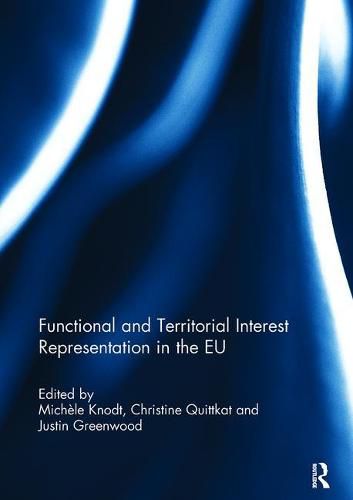Readings Newsletter
Become a Readings Member to make your shopping experience even easier.
Sign in or sign up for free!
You’re not far away from qualifying for FREE standard shipping within Australia
You’ve qualified for FREE standard shipping within Australia
The cart is loading…






Despite a substantial legacy of literature on EU interest representation, there is no systematic analysis available on whether a European model of interest representation in EU governance is detectable across functional, and territorial, categories of actors. ‘Functional’ actors include associations for business interests, the professions, and trade unions, as well as ‘NGOs’ and social movements; territorial based entities include public actors (such as regional and local government), as well as actors primarily organised at territorial level. What are the similarities and differences between territorial, and functional, based entities, and are the similarities greater than the differences? Are the differences sufficient to justify the use of different analytical tools? Are the differences within these categories more significant than those across them? Is there a ‘professionalised European lobbying class’ across all actor types? Does national embeddedness make a difference? Which factors explain the success of actors to participate in European governance?
This book was originally published as special issue of Journal of European Integration.
$9.00 standard shipping within Australia
FREE standard shipping within Australia for orders over $100.00
Express & International shipping calculated at checkout
Despite a substantial legacy of literature on EU interest representation, there is no systematic analysis available on whether a European model of interest representation in EU governance is detectable across functional, and territorial, categories of actors. ‘Functional’ actors include associations for business interests, the professions, and trade unions, as well as ‘NGOs’ and social movements; territorial based entities include public actors (such as regional and local government), as well as actors primarily organised at territorial level. What are the similarities and differences between territorial, and functional, based entities, and are the similarities greater than the differences? Are the differences sufficient to justify the use of different analytical tools? Are the differences within these categories more significant than those across them? Is there a ‘professionalised European lobbying class’ across all actor types? Does national embeddedness make a difference? Which factors explain the success of actors to participate in European governance?
This book was originally published as special issue of Journal of European Integration.